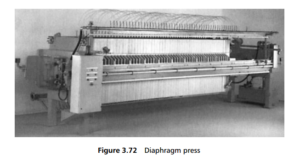0
-
An empty cart
You have no item in your shopping cart
envato-wordpress-toolkit domain was triggered too early. This is usually an indicator for some code in the plugin or theme running too early. Translations should be loaded at the init action or later. Please see Debugging in WordPress for more information. (This message was added in version 6.7.0.) in /var/www/wp-includes/functions.php on line 6121g5plus-darna domain was triggered too early. This is usually an indicator for some code in the plugin or theme running too early. Translations should be loaded at the init action or later. Please see Debugging in WordPress for more information. (This message was added in version 6.7.0.) in /var/www/wp-includes/functions.php on line 6121The main development of the filter press from the simpler versions just described has been to include an impervious elastomeric sheet in each plate compartment (one for each plate on the feed side of the filter medium, butting up against the corresponding sheet of the next plate). These flexible sheets can be inflated pneumatically so as to press down on the drained cake, once filtration is complete, and so dewater it by compression. This type of filter press is then known as the diaphragm
filter press (as shown in Figure 3.72). (Initially this sheet was referred to as a membrane, and the term ‘ membrane filter press ’ became quite confusingly well-known.

The alternative meaning of membrane as a semi-permeable material required the change to the use of the word diaphragm.)
The filtration cycle can be shortened in the diaphragm press while still producing a dry cake. This enables the optimization of the cycle time, to maximize output: although the volume of cake produced per cycle may be less, the number of cycles per unit time can more than compensate for this.
The filter cake is formed at pressures up to around 8 bar, but then the diaphragm exerts a pressure of up to 15 bar or more to dewater the cake, enabling capacity increases of 50% on a corresponding recessed plate press.